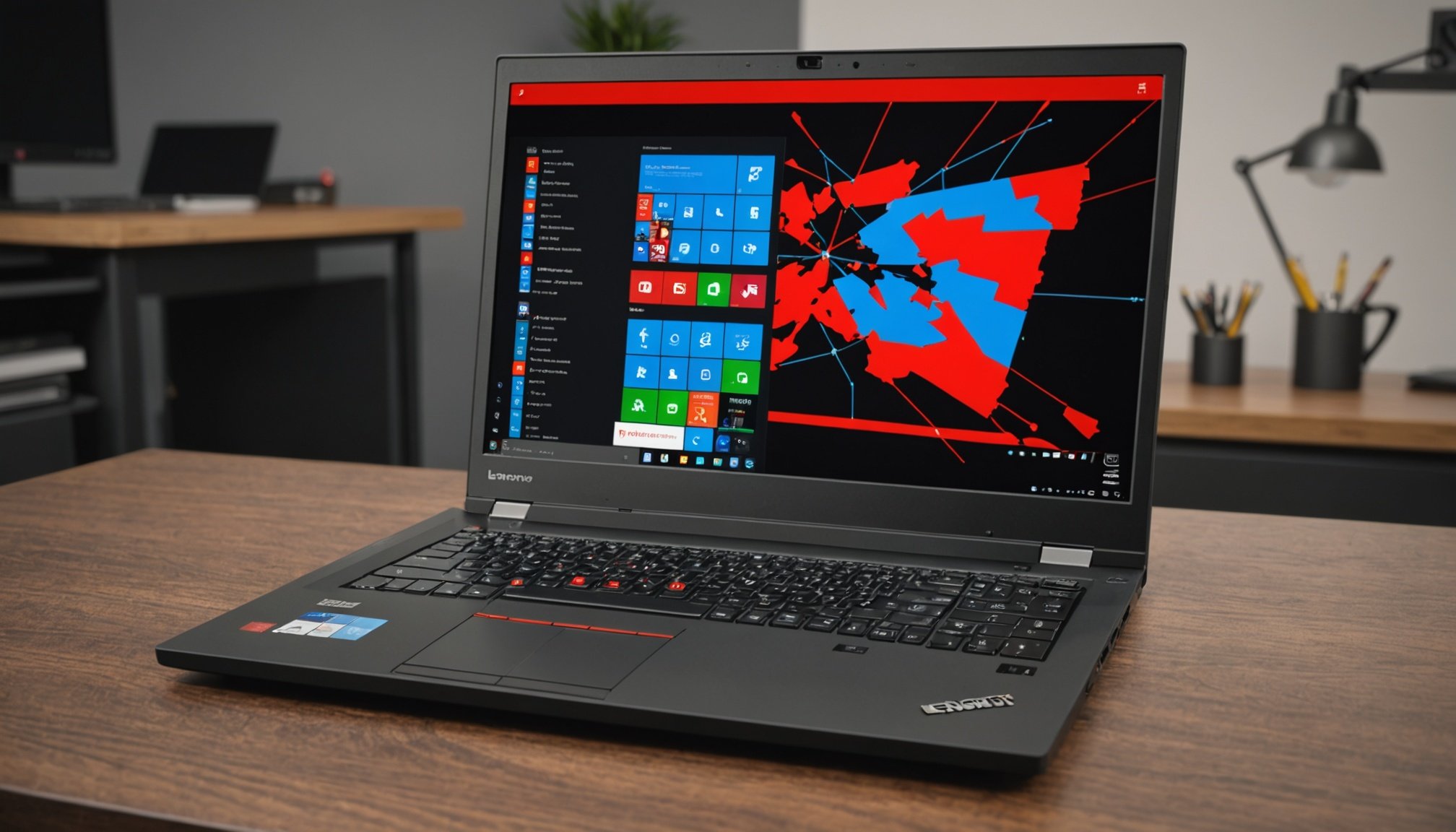Hardware Upgrades for the ThinkPad P52
To maximize the Lenovo ThinkPad P52‘s potential for machine learning tasks, several hardware upgrades are vital. Understanding these critical components can dramatically boost machine learning performance.
RAM and GPU Specifications:
The Lenovo ThinkPad P52 can support up to 128 GB of RAM. For efficient data handling in machine learning tasks, upgrading to at least 32 GB is advisable. This provides a balanced machine learning performance for most tasks. Additionally, a robust GPU is imperative. The P52 supports NVIDIA’s Quadro GPUs, like the Quadro P2000, which offers a significant improvement in computations, essential for handling complex machine learning models.
Storage Options:
In parallel : Master 4K Video Editing: Top Strategies to Optimize Your HP Z2 Tower G5
For faster data access, the integration of an SSD is strongly recommended. The ThinkPad P52 can be configured with multiple storage solutions. Opt for a 1TB NVMe SSD for primary storage as it significantly reduces data retrieval times, enhancing overall system responsiveness.
By focusing on these hardware upgrades, users can ensure their ThinkPad P52 meets the demands of modern machine learning tasks. Whether it’s increasing RAM for greater multitasking capabilities or using powerful GPUs for high-end computations, these improvements pave the way for superior machine learning performance.
Software Configurations for Machine Learning Optimization
Optimizing software configurations on the Lenovo ThinkPad P52 is essential for maximizing machine learning performance. Ensuring the operating system is set up correctly can dramatically enhance processing efficiency. It’s crucial to keep the OS updated and streamline startup processes to reduce unnecessary load.
For machine learning, integrating frameworks like TensorFlow or PyTorch is recommended. These libraries provide robust support for complex computations required in developing sophisticated models. Additionally, employing Anaconda as a package manager simplifies the installation and management of these frameworks, making it easier to create isolated environments tailored to specific projects.
Configuring environment settings efficiently involves allocating appropriate system resources for machine learning tasks. This includes setting the PATH variables to point to the correct directories and adjusting virtual memory to cope with large datasets. The objective is to ensure optimal synergy between hardware and software components.
Furthermore, virtual environments like Docker can help maintain consistent development environments across different stages of a project. By doing so, they help in avoiding compatibility issues that may arise from different software configurations. This practice encourages efficient resource utilization and improves overall system efficiency, allowing machine learning tasks to be executed with precision and accuracy.
Optimization Techniques for Enhanced Performance
To fully unleash the ThinkPad P52’s performance enhancement, applying effective optimization techniques is essential. These methods significantly contribute to system efficiency, ensuring smoother machine learning operations.
Resource Management
Efficient allocation of CPU and GPU resources is crucial. By adjusting task priorities and core assignments, you can ensure training efficiency. This technique avoids unnecessary bottlenecks, allowing for a seamless learning experience while maximising system throughput.
Background Processes
Minimizing background processes is a secret weapon in boosting system performance. Disable non-essential programs and services that consume computational resources. This action frees up memory and processor power, directing them towards more significant, performance-critical tasks like machine learning computations.
Heat Management Techniques
Implementing robust heat management techniques is imperative to prevent thermal throttling. Ensuring proper airflow through the laptop’s interior is a simple yet effective approach. Adding cooling pads or external fans helps maintain an optimal temperature for the CPU and GPU, directly influencing performance enhancement. Regularly cleaning vents and applying new thermal paste can further aid in preserving the system’s efficient operation.
Recommended Tools and Libraries for Machine Learning
When delving into machine learning, having the right tools and libraries is essential to streamline your workflow. Effective machine learning libraries not only simplify complex computations but also enhance productivity.
Overview of Essential Tools:
-
Data Preprocessing: Pandas and NumPy are indispensable for cleaning and organizing datasets. These libraries offer robust support for data manipulation, crucial for preparing data before feeding it into models.
-
Model Training: Scikit-learn is perfect for classical machine learning algorithms, providing a user-friendly interface to implement various models quickly. TensorFlow and PyTorch are go-to choices for deep learning, celebrated for their versatility and power in handling sophisticated models.
Facilitating Workflow Efficiency:
The integration of Jupyter Notebook can revolutionise how users interact with data. This tool allows for real-time code writing, visualisation, and debugging, which are particularly beneficial in iterative model development.
Community Resources:
Participating in online forums like Stack Overflow or the TensorFlow community can be invaluable for troubleshooting and learning new techniques. These platforms offer a plethora of community-shared solutions and insights, fostering continuous learning and improvement in machine learning efficiency.
Potential Pitfalls and Troubleshooting
Optimizing the Lenovo ThinkPad P52 for machine learning is not without challenges. Common issues may arise, impacting performance. Knowing how to address these swiftly is crucial for maintaining system efficiency.
Compatibility Concerns
Users frequently encounter compatibility issues when integrating new hardware upgrades or software configurations. Ensuring updated drivers and compatible versions of machine learning libraries are installed can minimise these disruptions. Regular system checks for software updates and compatibility assessments help identify issues early.
Resource Bottlenecks
Resource bottlenecks can impede machine learning performance. These occur when tasks demand more from the system than what’s available, often due to insufficient RAM or GPU power. Addressing this involves ensuring that the hardware upgrades are suitably matched to the tasks at hand and reallocating resources through proper configuration.
Performance Drops
Sudden performance drops can frustrate users. These often result from background processes silently consuming valuable resources. Regularly inspecting and managing active processes, alongside optimising startup programs, helps free up resources, ensuring smoother operations.
System Health and Longevity
To maintain long-term performance, regular system health checks are essential. This involves monitoring temperature levels to prevent thermal throttling and performing routine hardware inspections. Implementing these strategies ensures the P52 remains a reliable workhorse in the face of demanding machine learning tasks.
Performance Benchmarks and Case Studies
Exploring performance benchmarks and case studies provides valuable insights into the machine learning potential of the ThinkPad P52 when equipped with optimized configurations. By analyzing these assessments, users can better understand practical implications and efficiency improvements achieved through hardware and software enhancements.
Summary of Benchmark Tests
Benchmark tests conducted on the ThinkPad P52 highlight its robust capabilities in machine learning tasks. Using optimized configurations, the P52 exhibits impressive performance benchmarks, such as reduced data processing times and enhanced training speeds. These benchmarks reflect the significant impact of recommended hardware upgrades like increased RAM and superior GPUs on machine learning efficiency.
Real-World Case Studies
Real-world case studies illustrate the ThinkPad P52’s effectiveness in diverse machine learning scenarios. Projects involving large datasets and complex models demonstrate noticeable gains in training accuracy and speed. These case studies underscore the importance of tailored software configurations to leverage the full potential of hardware enhancements.
Insights for Best Practices
The analysis of these results offers key insights into best practices for maximizing machine learning performance. Emphasizing the synergy between hardware upgrades and optimal software settings, these practices ensure the ThinkPad P52 operates at peak efficiency. Adopting such strategies can significantly enhance machine learning workflows, paving the way for innovative solutions and discoveries.










